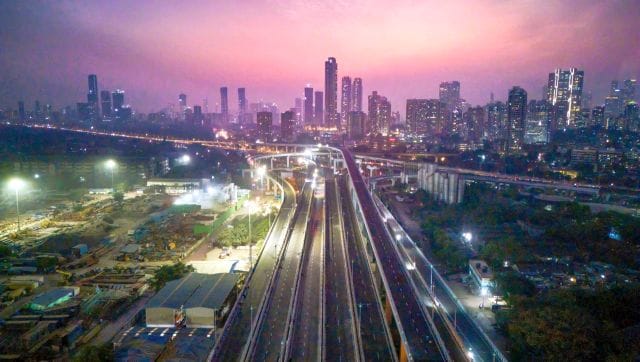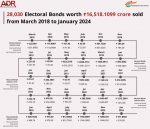Connectivity in India has just improved nearly 22 times over, as Prime Minister Narendra Modi inaugurates the Mumbai Trans Harbour Link (MTHL), officially called Atal Setu Nhava Sheva Sea Link. The longest sea bridge in India, the project will significantly shorten travel time between Mumbai and Navi Mumbai, becoming a huge boon for commuters.
The 21.8-km-long Mumbai Trans Harbour Link bridge, with six lanes, has been constructed at an estimated cost of Rs 17,840 crore. Following its inauguration on Friday (12 January) at the hands of Prime Minister Narendra Modi, it will be thrown open to the public on Saturday morning.
Named after former Prime Minister Atal Bihari Vajpayee, the bridge is also expected to reduce the travel time from Mumbai to Pune, Goa, and South India.
If you want to travel on this bridge, here’s what you need to know – from which vehicles are allowed to the toll costs and much more.
Vehicles allowed and not allowed on MTHL
Four-wheelers, including cars, taxis, light motor vehicles, minibuses, and two-axle buses will be allowed to ply on the Mumbai Trans Harbour Link, which will cut travel time from the current two hours to around 20 minutes.
However, the Mumbai Traffic Police has said that certain vehicles won’t be allowed on the new bridge that goes from Sewri in Mumbai and concludes at Nhava Sheva in Uran taluka in Raigad district. This includes motorcycles, moped, three-wheeler tempo, auto rickshaws, tractors, tractors with unladen trolleys, animal-drawn vehicles, and slow-moving vehicles.
These vehicles will have to take the Mumbai Port-Sewri Exit (Exit 1C) and use the MBPT Road near ‘Gadi Adda’ for further movement.
It is yet to be decided if buses will be allowed on the bridge. Municipal Commissioner Rajesh Narvekar told The Indian Express that given its length, its usefulness for bus passengers was being looked into. The absence of bus stops along the bridge has also contributed to the uncertainty about bus services.
The authorities have also set speed limits for vehicles on the Mumbai Trans Harbour Link. The maximum speed limit for four-wheelers has been set at 100 kmph. This will drop to 40 kmph during the ascent and descent of the bridge, aiming to ensure safety and prevent disruptions.
Toll for MTHL
The toll for the Sewri-Shivaji Nagar (Ulwe) stretch has been fixed at Rs200 and Rs 50 for the 2.5 km Shivai Nagar-Gavhan stretch. For a return trip, the toll has been fixed at Rs 300.
Special features of the MTHL
The MTHL is among the world’s longest sea-bridges. It features a six-lane sea link, with 16.50 kilometres constructed over the sea and 5.5 kilometres on land, making it a remarkable engineering feat.
Construction on this project began in 2017 and initially was expected to be completed in four-and-a-half years’ time. However, COVID-19 pandemic and technical issues pushed the opening by a bit. However, it’s important to note that the MTHL was envisioned around 30 years ago, with the aim of speeding up travel between Mumbai and Navi Mumbai.
According to Sanjay Mukherjee, the metropolitan commissioner of Metropolitan Region Development Authority (MMRDA), the steel used for the construction of the bridge is 17 times that of the Eiffel Tower and equivalent to the weight of 500 Boeing aeroplanes. “The structural steel used is four times that of the Howrah Bridge. The concrete used is six times that of the Statue of Liberty in the US,” he said.
Earlier, Maharashtra chief minister Eknath Shinde had said that the MTHL would prove to be a game-changer for speedy development. “The MTHL links Navi Mumbai, Raigad and other cities which would result in in attracting new development projects and big corporations to his area, and the entire region will progress and prosper,” said Shinde.
Traffic snarls on both sides of the Mumbai Harbour would be history as vehicles will zip through the bridge in barely 20 minutes without affecting the environment or the Ramesar Site flamingo sanctuary below it, he added.
While this project is being hailed for improving connectivity, there are some who question the cost of the toll. The Rs 250 toll for a one-way crossing of the Trans Harbour Link is deemed to be high. In contrast, the Bandra-Worli Sea Link has a toll of Rs 85 for a one-way trip and Rs 127 for a return journey.
With inputs from agencies
Link to article –
PM inaugurates Mumbai Trans Harbour Link: Who can use it, who can’t?





